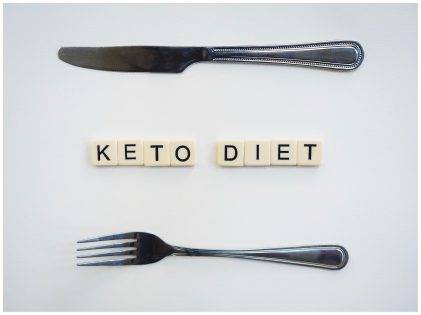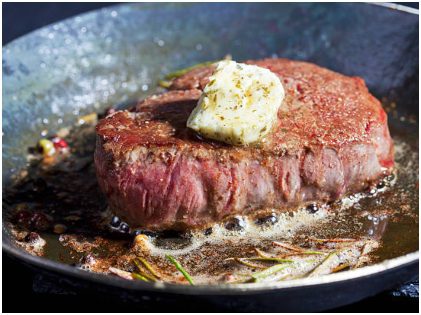 The keto diet has certainly been one of the most popular diets in recent times, and why not since you can eat some of the most delicious foods, such as avocado, butter, bacon, and cream, and more. However, you need to cut down on added sugars, sweets, processed foods, grains, and starchy veggies.
The keto diet has certainly been one of the most popular diets in recent times, and why not since you can eat some of the most delicious foods, such as avocado, butter, bacon, and cream, and more. However, you need to cut down on added sugars, sweets, processed foods, grains, and starchy veggies.
The diet has several Hollywood A-listers as its fans, including the likes of Halle Berry, Megan Fox, Gwyneth Paltrow, and more. It may be difficult to follow a classic keto diet as it may be tough to follow in the long run. The traditional keto diet guides your body to get into ketosis, and it helps your body burn fat. Here are some variations of the keto diet that you need to follow.
Standard Ketogenic Diet
In this traditional diet, you need to have 75% off fat,15-20% protein, and just 5-10% carbs. In this diet plan, you need to get your fat sources from avocados, ghee, butter, fatty fish and meats, olives, and olive oil. You also need to get 150 grams a day of fat, and that will mean nearly ¾ cup of olive oil three times a day, much more than you may be having now. This way, you can push your metabolism, so it starts burning fat as fuel. Slash down your carbs from about 300+ grams per day to just 50 grams a day. This will mean you can stick to leafy greens, non-starchy vegetables, and low-carb fruits such as berries and melon. You can get 90 grams of protein per day or 30 grams at each meal, so it will mean getting 4 ounces of meat, fish, or poultry.
The Targeted Keto Diet (TKD)
 Here the macronutrient lowdown will read as 65-70% fat, 20% protein, 10-15% carbs. This diet plan is pretty popular among athletes and active individuals who are now leading a keto lifestyle but eat more carbs than normal. You can eat 20-30 grams of carbs after intensive workouts to enhance recovery in this diet plan. (The total carb count can amount to 70-80 grams per day.) The best options in this list can be fruit, dairy, or grain-based foods, or in some cases, sports nutrition products. Athletes can burn off the extra fat as they are generally more active than others.
Here the macronutrient lowdown will read as 65-70% fat, 20% protein, 10-15% carbs. This diet plan is pretty popular among athletes and active individuals who are now leading a keto lifestyle but eat more carbs than normal. You can eat 20-30 grams of carbs after intensive workouts to enhance recovery in this diet plan. (The total carb count can amount to 70-80 grams per day.) The best options in this list can be fruit, dairy, or grain-based foods, or in some cases, sports nutrition products. Athletes can burn off the extra fat as they are generally more active than others.
The Cyclical Keto Diet (CKD)
This type of keto diet includes a macronutrient breakdown as 75% fat, 15-20% protein, 5-10% carbs on keto days; and on other days, you can consume 25% fat, 25% protein, and 50% carbs on days you are not doing keto.
Keto cycling enables your body to cycle in and out of ketosis while you eat a wider range of foods on your off days. One keto cycling approach may include five days of the traditional keto diet and two days to go non-keto days. Some people can save their off days for certain occasions such as holidays, birthdays, and vacations. Eat wholesome carbohydrate-rich foods such as dairy products, fruits, starchy veggies, and whole grains to get the best results. You can still avoid processed stuff and refined sugar.
High-Protein Keto Diet (HPKD)
 The macronutrient ratio breakdown reads as 60-65% fat, 30% protein, 5-10% carb. This diet plan means eating about 120 grams of protein per day. You can include 4-ounce servings of meat, fish, or poultry. However, you include at least 130 grams of fat per day. You still need to have a lower amount of carbs. You need just 10% of your daily calories. This is a much easier diet to follow than the other keto versions. It allows you to eat more protein and a lesser amount of fat than the classic keto diet. This may not get you into ketosis, but it may surely help you knock off the extra pounds.
The macronutrient ratio breakdown reads as 60-65% fat, 30% protein, 5-10% carb. This diet plan means eating about 120 grams of protein per day. You can include 4-ounce servings of meat, fish, or poultry. However, you include at least 130 grams of fat per day. You still need to have a lower amount of carbs. You need just 10% of your daily calories. This is a much easier diet to follow than the other keto versions. It allows you to eat more protein and a lesser amount of fat than the classic keto diet. This may not get you into ketosis, but it may surely help you knock off the extra pounds.
While a keto diet is certainly the fastest way to lose weight, it may not be the ideal diet plan for anyone simply because it is not sustainable in the long run. In other words, consuming a balanced diet that can give good results for a long period is the key! So, before you choose to give it a go, talk to your doctor about its possible side effects and whether it suits your specific health condition. Also, if you follow it for a short time, do so under strict guidelines to avoid any unpleasant side effects of the diet.
